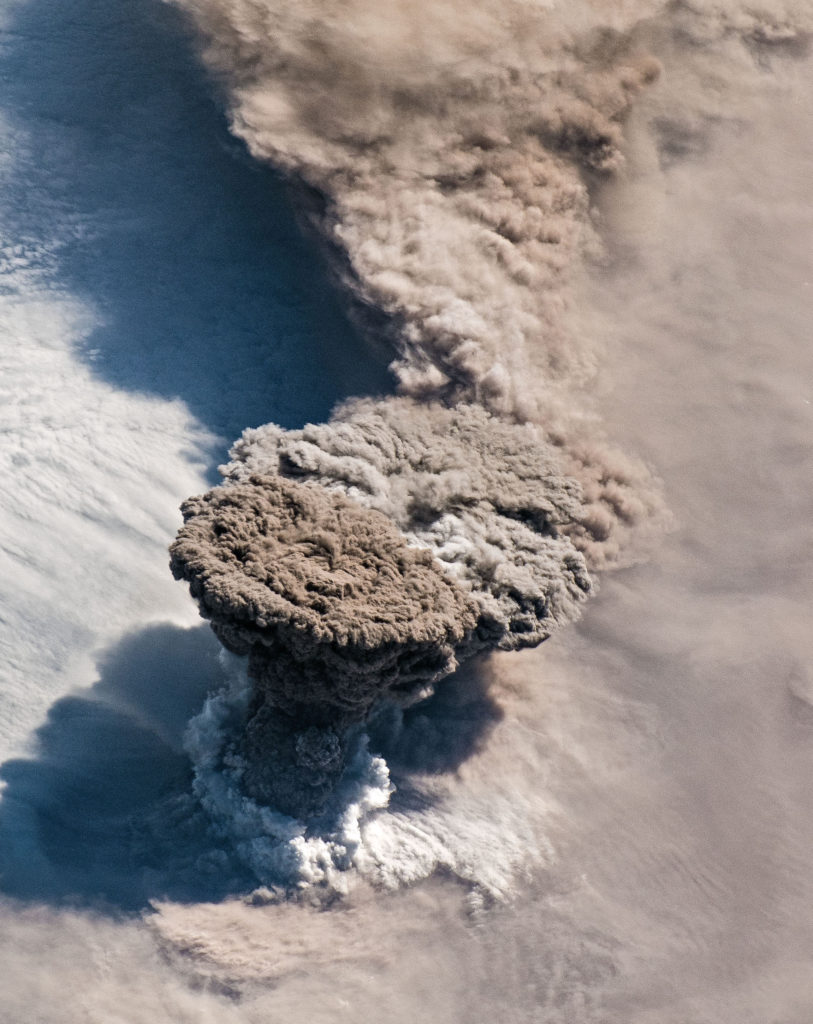Now, researchers at the University of Colorado Boulder have collected new measurements that help to reveal the cause those colorful displays: an eruption that occurred thousands of miles away on a Russian volcano called Raikoke.
The team of atmospheric scientists used a high-altitude balloon to detect particles created by that eruption in Earth’s stratosphere. These particles, or aerosols, scatter sunlight as it passes through the air, which in combination with the absorption of light by the ozone layer, gives sunrises and sunsets that purple tint.
There’s no cause for concern, said Lars Kalnajs, who led the balloon team. But the purple skies show that even seemingly-isolated volcanic eruptions can have global consequences.
“A really big eruption would have a major impact on humanity, so it’s something we need to be ready for,” said Kalnajs, a research associate in the Laboratory for Atmospheric and Space Physics (LASP).
It’s just the sort of disaster that he and his colleagues from NASA, the U.S. National Oceanic and Atmospheric Administration and several European institutes are preparing for.
The team relies on high-altitude balloons, which can soar to more than 20 miles above the ground, to measure the biproducts of volcanic eruptions in the atmosphere.
“It’s really important when major eruptions happen that we get data quickly,” said Kalnajs, also of the Department of Atmospheric and Oceanic Sciences. “We need to figure out if this is going to be the kind of thing that impacts hundreds of thousands of people around the world, or is going to be to be more minor?”
Raikoke gave them a good test for their skills. The volcano, which sits in the Kuril Islands off the eastern coast of Russia, erupted on June 22, 2019. Early data from NASA suggested that the explosion injected sulfur dioxide gas, which can lead to the formation of aerosols, into Earth’s stratosphere—a layer of the atmosphere that begins about 7.5 miles above the surface.
Kalnajs and his colleagues wanted to see if they could find hints of that eruption in the stratosphere. In August, the team released a balloon near Laramie, Wyoming, and hit paydirt.
Based on the group’s preliminary data, which it will publish later this year, some aerosol layers in the stratosphere were 20 times thicker than normal in the wake of the eruption.
“It makes you realize that you don’t have to put a whole lot of aerosols into the stratosphere to change its composition,” Kalnajs said. “This was a relatively small volcanic eruption, but it was enough to impact most of the northern hemisphere.”
It could also explain why, at the same time, observers were noticing purple skies across the U.S. Such light displays likely haven’t been seen since 1991 when Mount Pinatubo in the Philippines erupted in 1991.
Kalnajs noted that the effect won’t last for long and is subtle. You’ll need the right weather conditions and a bit of luck to spot the phenomenon. But, he said, it’s a reminder that scientists will need to keep an eye out for the next Mount Tambora.
“It will happen at some point, whether that’s in one year, five years or 100 years,” Kalnajs said.
scraped from https://www.newswise.com/articles/volcanic-eruption-may-explain-recent-purple-sunrises


